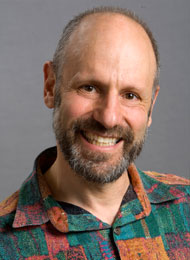- unknown (b.)
Bio/Description
An American computer scientist known for his user interface inventions, graduated from Brown University in 1979 with a B.S. degree in Applied Mathematics, and from the University of Massachusetts Amherst with an M.S. degree in Computer and Information Sciences in 1981. From June 1981 to 1983 he worked as Research Assistant in the Stanford University, Robotics Laboratory. One of his projects was a collaborative display system for the WAITS system of the Stanford Artificial Intelligence Laboratory (SAIL). He worked for Atari for a year; then returned to Stanford to teach for a year. He joined IBM in August 1985, first at the Thomas J. Watson Research Center. He graduated with a Ph.D. from City University of New York in 1992. His thesis was titled "A Framework for Proactive Interactive Adaptive Computer Help". He then moved to the IBM Almaden Research Center where he founded and directed the User Systems Ergonomics Research lab. In 1996 he was made an IBM Fellow; the highest honor a scientist, engineer, or programmer at IBM can achieve. In November 1999, he joined the MIT faculty where he headed the Context Awareness Computing Group at the MIT Media Lab and was the MIT Director of The Voting Technology Project and Design Intelligence. He left MIT in June 2008. From June to August 2011 he was the Director of Research at start-up Scanadu. Scanadu?s goal is to turn smart phones into medical monitoring devices. He has taught at Stanford University, Hampshire College, University of Massachusetts Amherst, and Brown University and consulted at Xerox PARC. His work often takes the form of bleeding edge prototype concept products, for example hybrid search engines, and is supported by cognitive science research into human computer interaction. He is regarded as a pioneer in the field of Context Awareness and has been cited in the media. Context Awareness is a property of mobile devices that is defined complementarily to location awareness. Whereas location may determine how certain processes in a device operate, context may be applied more flexibly with mobile users, especially with users of smart phones. His Context Aware Computing Group created 48 research platforms to demonstrate that systems can recognize and respect human desires and intentions across many natural scenarios. The group is recognized for its work in creating environments that use sensors and artificial intelligence to create so-called virtual sensors; adaptive models of users to create keyboardless computer scenarios. He was Associate Director of the CyLab Mobility Research Center, where he was honored at the University of Massachusetts, Amherst, Outstanding Achievement and Advocacy Awards Banquet on May 4, 2012. He holds 57 U.S. patents; his inventions having received more than 30 industry awards. He developed a prototype into the pointing stick (known as TrackPoint) technology which are the distinctive feature of the ThinkPad line of laptop computers (designed, developed and sold by IBM but produced by Lenovo since 2005). His technologies have been featured on Good Morning America, ABC, the Wall Street Journal, the BBC, NPR, and the Discovery Channel among others. He was co-recipient of Computer Science Policy Leader award for Scientific American 50 in 2004 and the American Association for People with Disabilities Thomas Paine Award for his work on voting technology in 2006. In June 2008 he moved to Palo Alto, California. He became Associate Director of mobility research at Carnegie Mellon Silicon Valley. He advocates a model of innovation that he calls Excubation. He is married with two children
-
Noted For:
Developer of a prototype into the pointing stick known as TrackPoint technology and the designer of the Thinkpad 755CV notebook computer, which doubles as an LCD projector -
Category of Achievement:
-
More Info:


